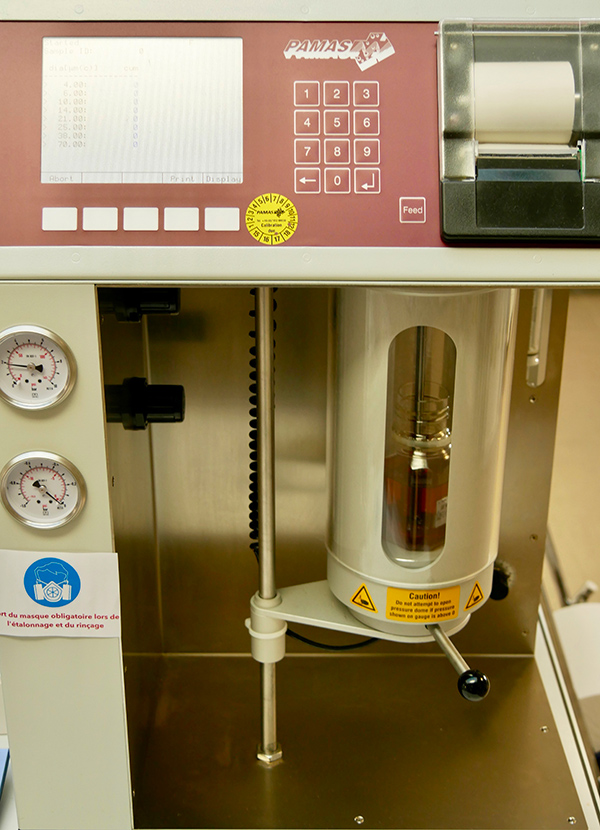We provide services to numerous hydraulic maintenance and circuit design companies, as well as end users in industries including plastics conversion, metallurgy and wind power and any company that uses machine tools.
All hydraulic lubricants on all types of plant.
Hydraulic machinery contains an increasing number of high-tech components with very little mechanical clearance. Breakdowns result in loss of production and machine downtime, and repairs are costly. The quantities of oil involved are often significant, and optimising oil change frequencies can bring substantial savings in this regard. It also helps to reduce the environmental impact by decreasing the volume of waste oil.
This illustrates the benefit of regular lubricant monitoring through laboratory analysis. Our analyses are equally useful on commissioning and throughout the service life of the machine.
Hydraulic engineers often monitor water content and contamination, but other measurements should not be forgotten. An uncontaminated fluid might still have deteriorated due to ageing, and wear metals can indicate the start of damage to mechanical parts.
We analyse all types of fluid (mineral, synthetic, biodegradable, HFC, FDU, FDR, Skydrol, etc.).
Of course, our response time is three working days (excluding optional analysis); we will contact you if there is a serious fault and are always available to discuss the results. Our independence is your guarantee of efficiency.
 Measurements taken
Measurements taken
Comments are closed.